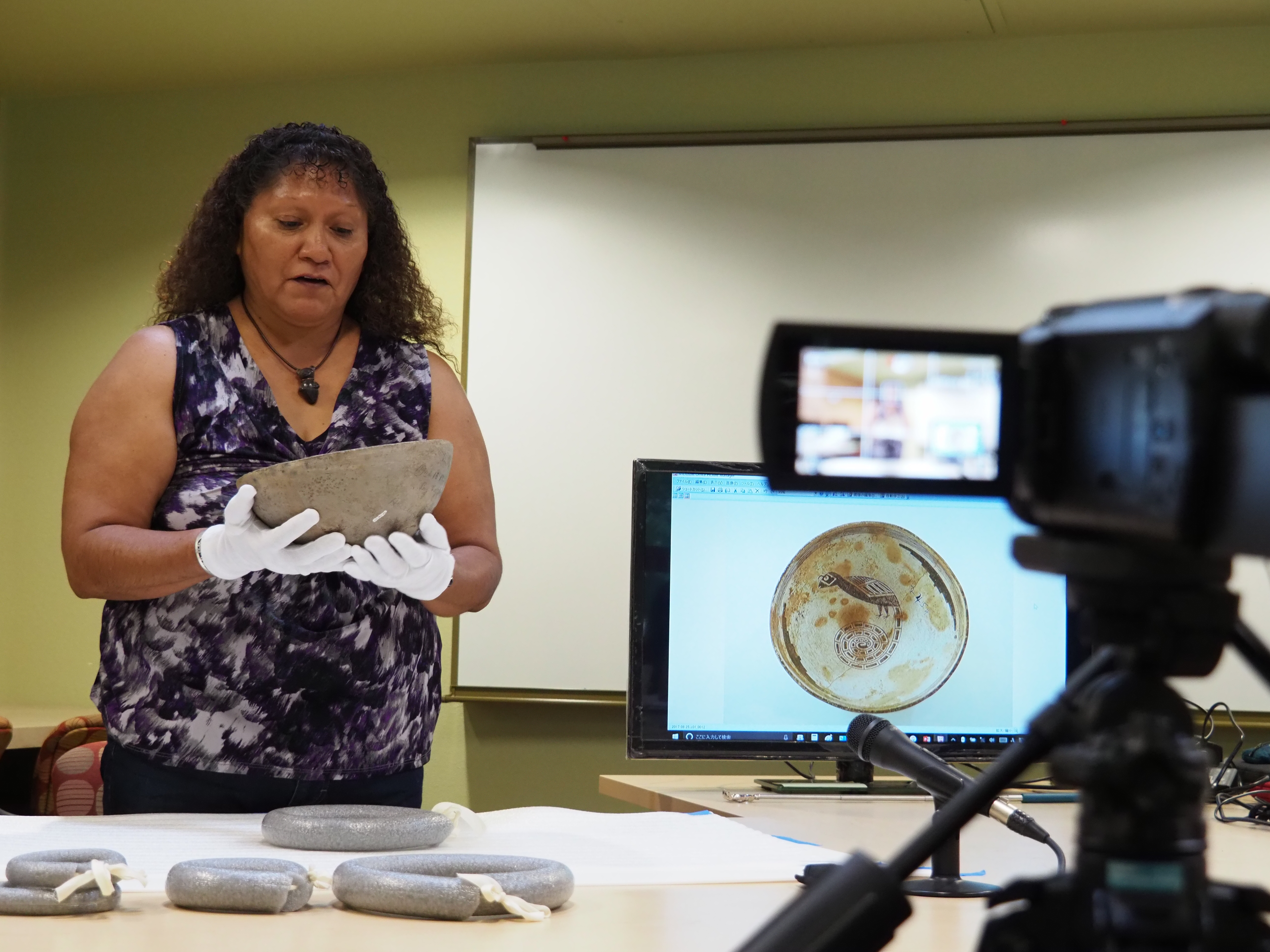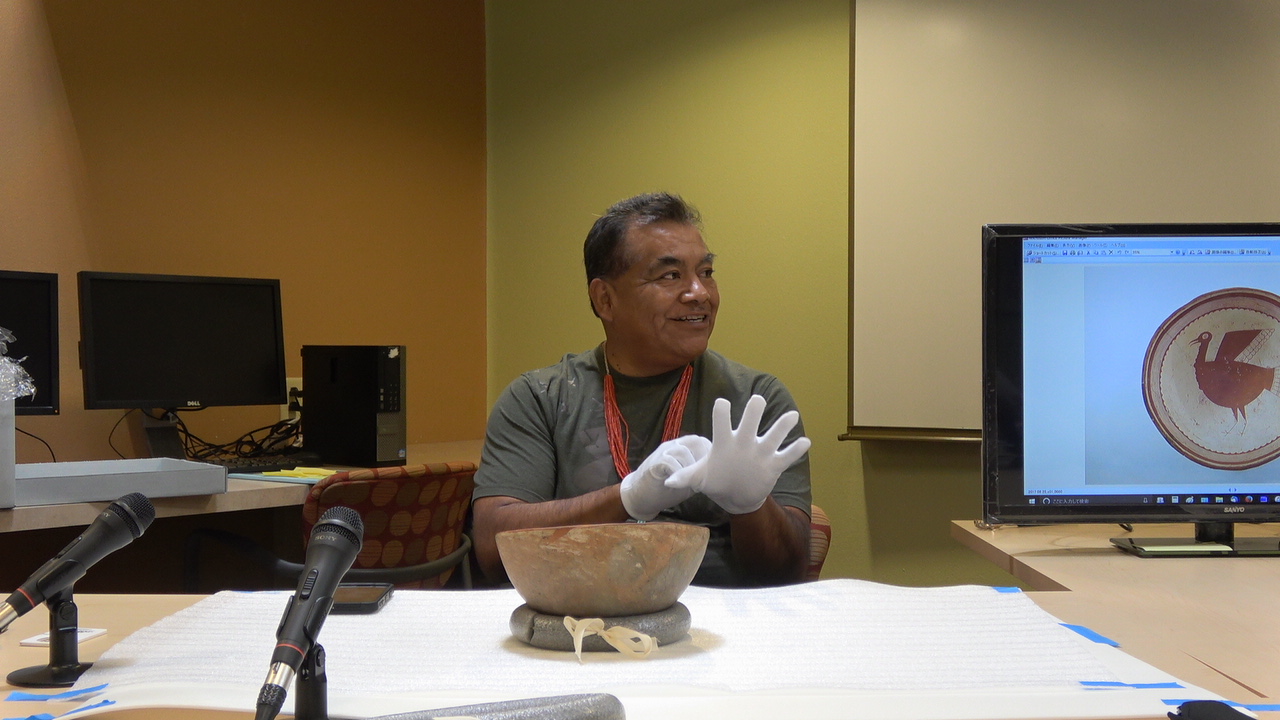NMSU exhibition displays ancient Mimbres pottery in ‘Living In Sacred Continuum’


Spectacular pottery designed and crafted by people of the Mimbres Valley and surrounding areas from A.D. 1000 to 1130 will be on display at the American Indian Student Center at New Mexico State University from April 26 through December 15 as part of the exhibition titled “Living In Sacred Continuum.” A panel of Native American artists will share interpretations about the pottery’s designs during a panel discussion from 1-4 p.m. Friday, April 26 at the American Indian Student Center.
The exhibition is the result of research NMSU Anthropology professor and director of the University Museum Fumi Arakawa conducted in collaboration with professor Atsunori Ito at the National Museum of Ethnology (Minpaku) in Japan. Ito and Arakawa began the research by meeting with Hopi arts and in hopes of hearing their interpretations about the meanings of the designs on the ancient vessels. Arakawa spent eight months in Japan engaged in a fellowship at Minpaku working on the project.
Mimbres, which means “willows” in Spanish, is the name given to the river in southwestern New Mexico where the Mimbres branch of the Mogollon people lived. Mimbres pottery is considered among the finest examples of prehistoric pottery ever made.
“Mimbres pottery is unique compared to other pottery types because it has anthropomorphic, the human figures, and also animal zoomorphic designs on some of the pottery,” Arakawa said. “We started with the anthropomorphic and zoomorphic designs and that was interesting because even among the Hopi artists, each person belongs to a clan system and each clan transmits its oral traditions and they keep their particular story to themselves. They don’t share it. So as they looked at the pottery vessels, one artist might understand some meanings very well but may not wish to share his or her interpretation because it belongs to that particular clan.”
One of the Hopi artists that met with Arakawa is Spencer Nutima, from Old Oraibe Village of Third Mesa in northern Arizona. He is Greaswood Clan and has been a katchina doll carver for more than 30 years. He also weaves ceremonial garments.
“Because we were able to physically hold each piece, it gave us a more direct sense of each pottery,” Nutima said. “We made comments, offered opinions and engaged in discussion on each piece of pottery. I was amazed to see how each piece of pottery had a unique character. You could feel the potter’s ability to bring out the artistry of each piece through shape and design. I could see that, while they were each unique, they had a basic setup that was understandable.”
When Arakawa met with five Hopi artists, some did not want to voice specific meanings about the designs. “That means they immediately knew it was a sacred, very important object,” Arakawa said. Even though this was the Mimbres pottery dating from A.D. 1000 to 1130 or 1150, but it resonated with them. I was touched by their culture.”
In September through December, Arakawa will host each of the five Hopi artists who will give a workshop and/or lecture at the University Museum in the Kent Hall courtyard/auditorium.
“We as artists have the feel for what has been accomplished by the ancestral artist, having been in their shoes,” Nutima said. “That is, as their descendants we are carrying on what they have learned to do. I for one learned my craft from my grandfather and my clan father. For today’s native artisan, this is art. But, for my ancestors, this was daily work. This was artistic expression, yes; but also utilitarian. We have learned the practical and artistic value of these pieces, and now can teach that to those researchers who care to listen.”
Arakawa’s next steps in the research are to engage similar groups to study the Mimbres pottery among the Zuni, Acoma, Laguna and other groups perhaps including Apache and Navajo as well.
“The overarching theme of my research is what I call the landscape studies, which means adding many different layers on the one I have started with Hopi artists and then integrate all the layers together,” Arakawa said. “This is just the beginning.”


